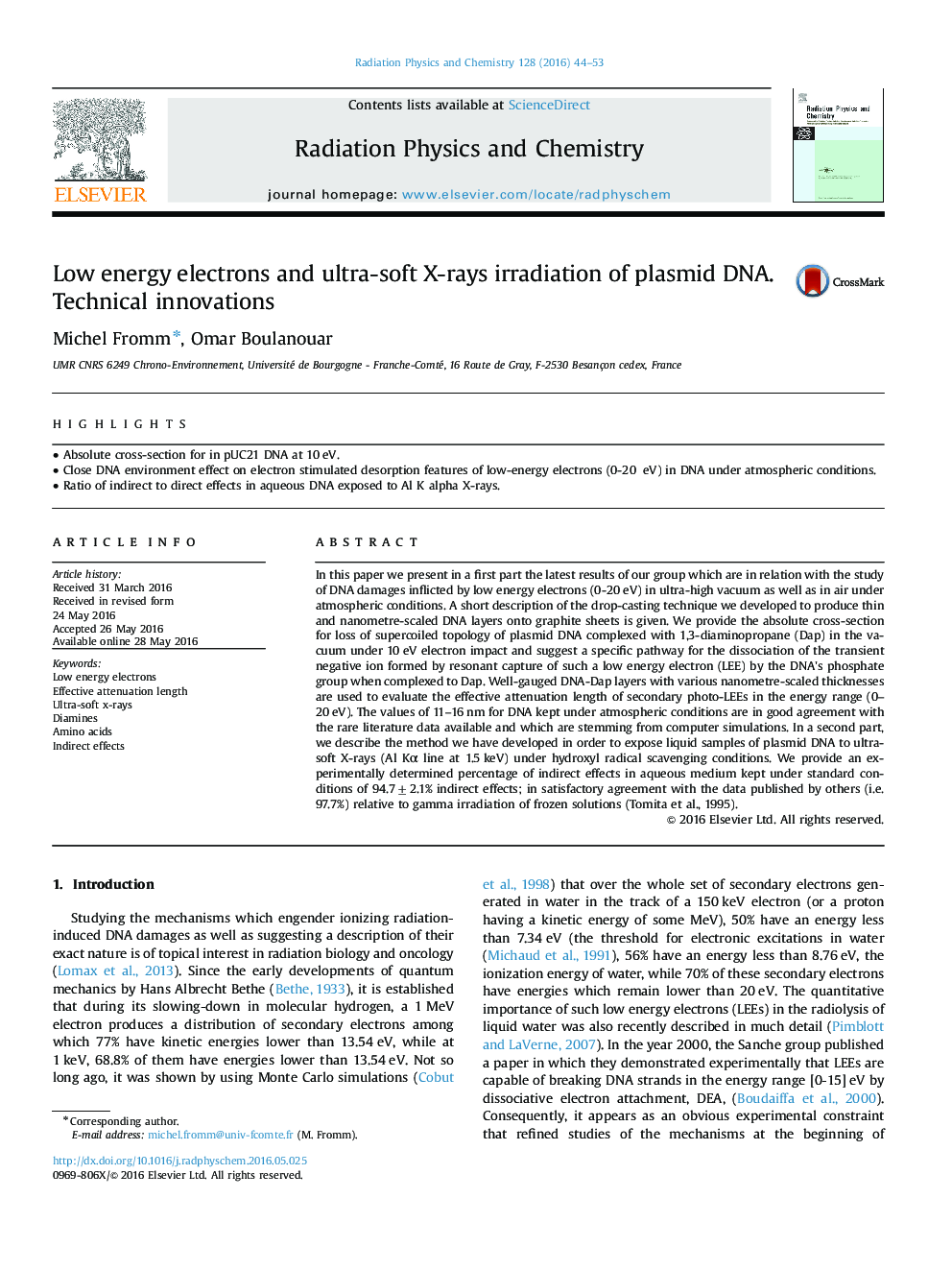| Article ID | Journal | Published Year | Pages | File Type |
|---|---|---|---|---|
| 5499326 | Radiation Physics and Chemistry | 2016 | 10 Pages |
Abstract
In this paper we present in a first part the latest results of our group which are in relation with the study of DNA damages inflicted by low energy electrons (0-20 eV) in ultra-high vacuum as well as in air under atmospheric conditions. A short description of the drop-casting technique we developed to produce thin and nanometre-scaled DNA layers onto graphite sheets is given. We provide the absolute cross-section for loss of supercoiled topology of plasmid DNA complexed with 1,3-diaminopropane (Dap) in the vacuum under 10 eV electron impact and suggest a specific pathway for the dissociation of the transient negative ion formed by resonant capture of such a low energy electron (LEE) by the DNA's phosphate group when complexed to Dap. Well-gauged DNA-Dap layers with various nanometre-scaled thicknesses are used to evaluate the effective attenuation length of secondary photo-LEEs in the energy range (0-20 eV). The values of 11-16 nm for DNA kept under atmospheric conditions are in good agreement with the rare literature data available and which are stemming from computer simulations. In a second part, we describe the method we have developed in order to expose liquid samples of plasmid DNA to ultra-soft X-rays (Al Kα line at 1.5 keV) under hydroxyl radical scavenging conditions. We provide an experimentally determined percentage of indirect effects in aqueous medium kept under standard conditions of 94.7±2.1% indirect effects; in satisfactory agreement with the data published by others (i.e. 97.7%) relative to gamma irradiation of frozen solutions (Tomita et al., 1995).
Related Topics
Physical Sciences and Engineering
Physics and Astronomy
Radiation
Authors
Michel Fromm, Omar Boulanouar,
